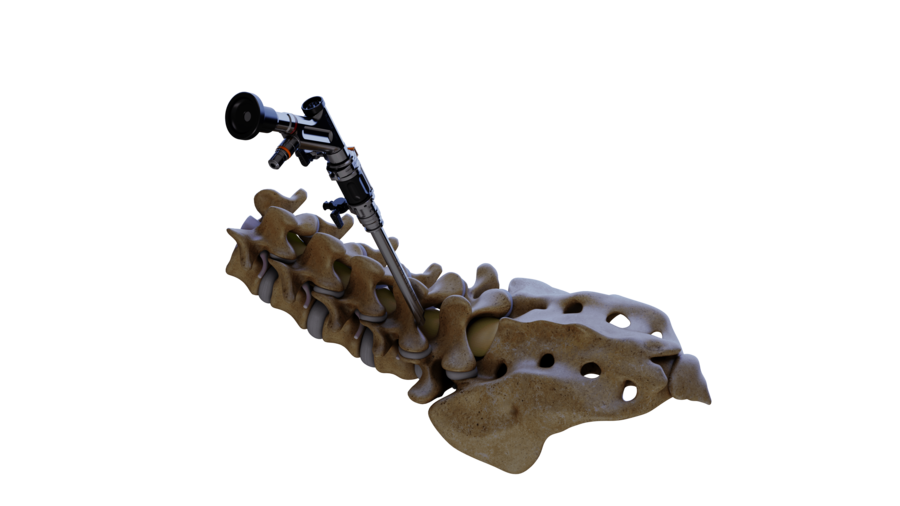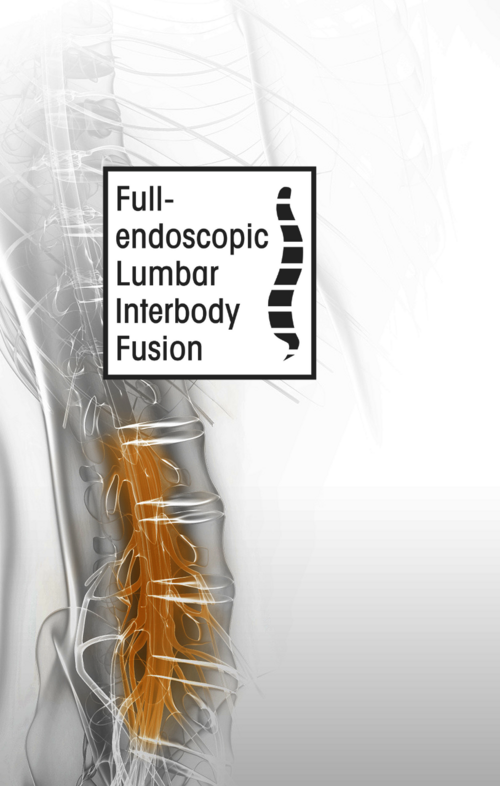Precise Intervention
Lumbar spinal fusion is a surgical intervention indicated for patients experiencing chronic back pain and functional limitations due to degenerative spinal conditions that have not responded to conservative treatments. Key indications include Instability, Spondylolisthesis and Spinal Stenosis.
Endoscopic techniques for lumbar spinal fusion offer significant advantages by minimizing access trauma and reducing the risk of infection through continuous irrigation. The enhanced visualization provided by endoscopic procedures is crucial for effektive fusion-interventionen, ensuring thorough preparation and precise positioning of the interbody cage.
Techniques
Endoscopic Fusion

New Standard for Lumbar Interbody Fusion
Lumbar interbody fusion is a well-described procedure in spine surgery. Thanks to ongoing technical developments and research, this procedure can also be performed in a minimally invasive setting. The full-endoscopic techniques bring clear benefits to the patient and are becoming the standard in spine surgery worldwide. As a result, lumbar interbody fusion can now also be performed completely full-endoscopically.
First, a standardized full-endoscopic interlaminar approach with the VERTEBRIS stenosis set is performed by introducing a dilator and working sleeve. With the endoscope, the individual surgical steps can be performed very precisely and minimally invasively under vision control.
This makes these techniques the least invasive procedure for spinal fusion, offering clear benefits for patients.

Second Portal Technique
Biportal endoscopic spine surgery is a minimally invasive surgical technique used to treat degenerative spine conditions in case of lumbar interbody fusion.
In some phases of an endoscopic spinal fusion, a second working channel can be obligatory in order to carry out certain work steps effectively, especially in demanding cases.
The main procedure is performed through the general endoscopic working channel to reduce tissue trauma and perform each procedure in a minimally invasive manner.
High-quality Products
See Matching Systems



evospine
eFuse
Evospine minimally invasive solutions makes interbody fusion procedures straightforward
More information

